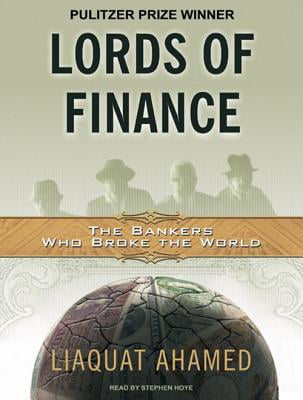

“Their goal is a strong economy and stable prices,” he writes. Ahamed compares these bankers to the Greek mythological character Sisyphus, condemned to eternal, endless effort.

Other catalysts included the Reichsbank’s irascible, unpredictable Hjalmar Schacht, whose obsession with eliminating reparations led Germany to the brink of default, and vindictive Émile Moreau, whose policy at the Banque de France aimed to destabilize the British pound. The crash of 1929 and the worldwide depression that followed were the inevitable results. Eccentric, aristocratic Montagu Norman of the Bank of England dealt with the problem of inadequate gold reserves to support the overvalued pound sterling by convincing Benjamin Strong, head of the Federal Reserve Bank of New York, to lower interest rates in America to encourage the flow of gold back to Europe.

The main characters of this unfolding drama were a quartet of bankers who saw themselves as “elite tribunes, standing above the fray of politics, national resentments, and amateur nostrums,” and who wielded astonishing, autonomous authority over monetary policy. The United States, a new economic power holding the bulk of the world’s gold bullion, demanded repayment of loans made to its allies this forced large, untenable reparation payments on Germany. France, Britain and Germany found themselves depleted of gold reserves. The gold standard, to which the major currencies of the world were tied, was thrown into tumult by World War I. Investment manager Ahamed sets the stage for his story with Toynbeean sweep. Erudite, entertaining macroeconomic history of the lead-up to the Great Depression as seen through the careers of the West’s principal bankers.


 0 kommentar(er)
0 kommentar(er)
